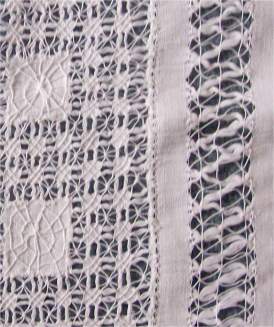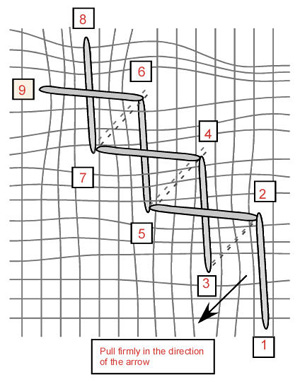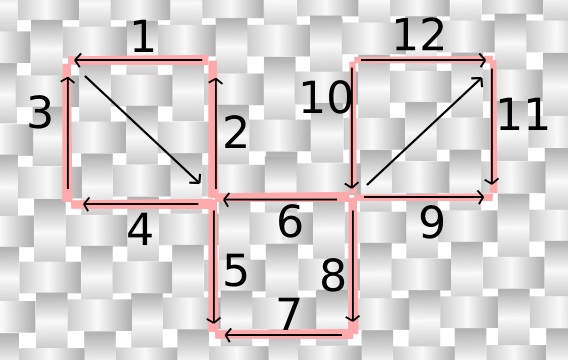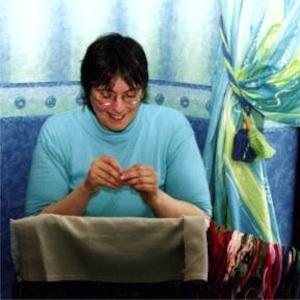- Home
- Whitework
What is whitework embroidery?
Whitework embroidery is an umbrella term for needlework done with white thread on white fabric.
Normal embroidery floss is often not strong enough so other threads are more commonly used.
While the material used has changed over the years, embroidery is still popular. Sure, it takes skill and focus since it often involves removing or bunching fabric threads.
However, ground fabric is not always necessary. The stitches form the structure in techniques such as needlelace, also known by its Italian name "punto in aria." Translated into English, this means "stitches in the air."
Free whitework sampler
Try my free sampler for beginners to learn several stitches and whitework embroidery techniques!
Band 1 - Do the first filling stitch
Band 2 - Drawn thread work
Band 3 covers Pulled satin stitch and double back stitch
Band 4 introduces diamond eyelet stitch and double backstitch leaves
Band 5 - practice pulled satin stitch and also learn honeycomb stitch
Band 6 - learn three-sided stitch and ringed back stitch
Band 7 - diagonal four-sided stitch finishes off the sampler
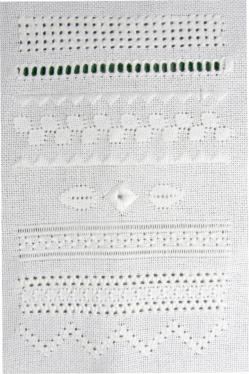
Types of whitework embroidery
The links below will take you to the relevant sections on this page.
Drawn thread work
The term drawn thread work relates to a type of white on white embroidery where fabric threads are removed. The remaining threads are grouped in clusters forming solid and open areas in a design.
Try decorative hemstitching. Just remove threads in one direction. It's great for edges or insertions.
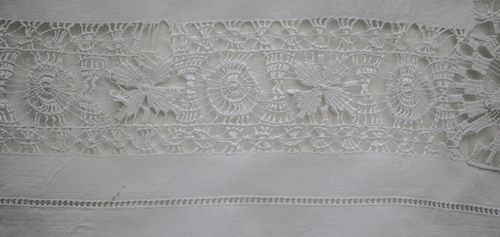
You can remove threads both ways. Bind the remaining threads to form a grid the embellish with needleweaving or darning. The resulting area is known as a withdrawn ground.
After the 17th century, this was common on baby items. Think caps, bonnets, and christening gowns.
Check out Band 2's free tutorial on drawn thread. It's in the sampler above.
Pulled thread embroidery
Pulled work is also called drawn fabric. It moves threads, not removes them.
The stitches pull the threads into bunches allowing the holes formed to make the patterns.
Pulled thread work isn't effective when worked with coloured threads. The stitches should be invisible.
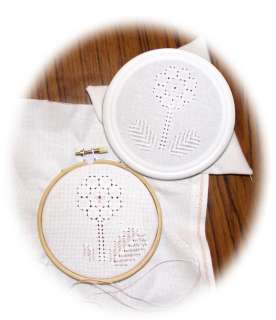
Hardanger Embroidery
Hardanger embroidery is named after the area in Norway where it originated.
This needlework uses pulled and drawn thread techniques. It also includes satin stitch motifs and blocks. Fabric threads are removed and the remaining threads wrapped or needlewoven. Lacy stitches fill the gaps.
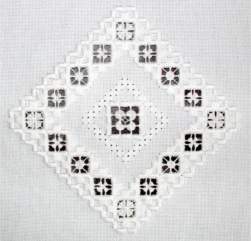
Traditionally Hardanger embroidery was used to decorate aprons, clothing, and household linens. Modern Hardanger often uses colour and can be effectively stitched this way.
My hardanger patterns can be found by clicking the link.
Needlelace (or Needlepoint lace)
As I mentioned earlier, needlelace followed the early whitework embroidery techniques. Although lace is traditionally white, modern-day needlelace can be worked in colour.
Using simple buttonhole stitches, it is possible to create gossamer fine needlelace. Or padded pieces that resemble carved ivory.
It is often used to create items for stumpwork projects. Or to decorate crazy quilt blocks like my mermaid in the photo.
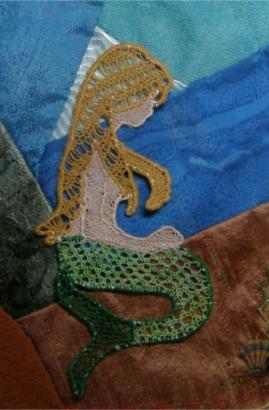
Cutwork embroidery
Cutwork embroidery the precursor to later needle-made laces, was first mentioned in the 12th Century.
Can you believe it was once a secret craft, worked by nuns? They used it on priests' sacramental robes and even on grave cloths for saints!
Fast forward to the 15th to 17th Century, and guess what happened? Upper-class ladies got in on the act! Using it to make altar cloths for church gifts and fine linens.
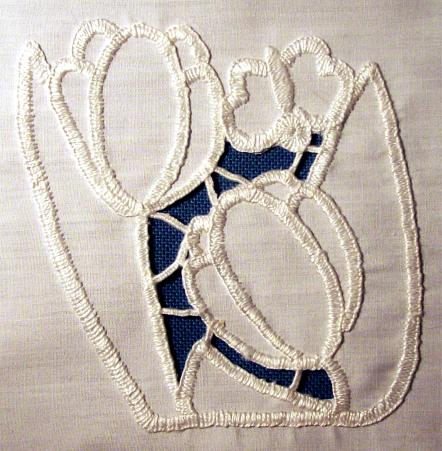
And here's a fun fact: the original cutwork techniques didn't just vanish. They grew, expanded, and became the foundation for a variety of other techniques.
Richelieu embroidery
Richelieu was inspired by early cutwork embroidery. It was popular from the 14th to 16th centuries. Designs consisted of buttonhole outlined shapes with cut-away areas. The spaces were crossed by buttonholed bars decorated midway with picots (tiny loops).
Richelieu embroidery often adorned tablecloths and mantlepiece edgings. Coloured fabric behind it highlighted the open areas.
This sturdy embroidery survived washing meaning some antique pieces are still around today.
Reticella
Richelieu was superseded by Reticella, apparently also known as Greek Point.
This needlelace was the first to use fabric only for support during the stitching. Threads were laid across a pattern, couched, then decorated with overcast stitches and picots. The fabric was removed once the lace was complete.
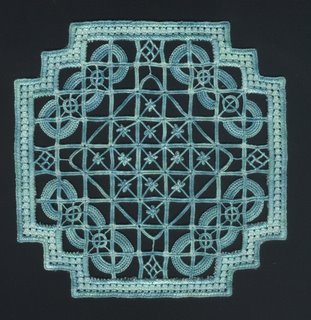
It is considered the most beautiful type of needlelace, but takes time to construct.
Reticella adorned altar cloths and church vestments. It also trimmed starched 15th-17th century ruffs.
The photo shows modern Reticella, stitched by Jenny Bargh, from Sydney, Australia. Jenny used a pattern from "Rakam," an Italian magazine to craft this stunning piece.
Jenny has her own blog at http://jennysaustralianneedleart.blogspot.com where you can see more of her work. She kindly agreed to let me showcase her work here for you. Thank you Jenny.
Hollie Point
Hollie point, a middle ages embroidery technique, was also worked by nuns and first used for church laces. Sacred emblems like Adam, Eve, or lilies were common.
The pattern, worked in Hollie stitch, was shaped by spaces between stitches. It resembled filet crochet.
Ready to try whitework embroidery?
Whitework embroidery is a beautiful and delicate art form that has been cherished for centuries.
From christening gowns to household linens, the intricate stitches and patterns create stunning pieces.
While it requires skill and focus, the possibilities are endless. So why not try your hand at whitework embroidery and create something truly special?
